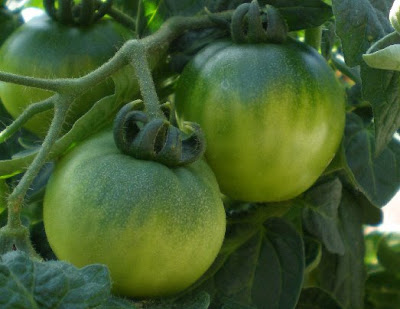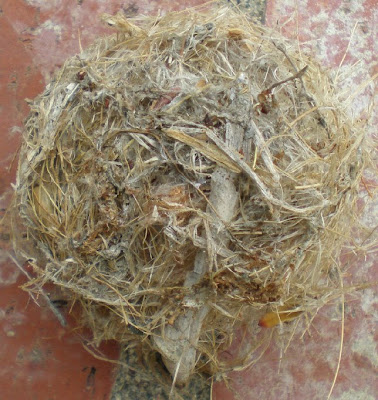 I just thought it was interesting that the grocery store classified cat food as "nonedible". I'm not going to tell the cats.
I just thought it was interesting that the grocery store classified cat food as "nonedible". I'm not going to tell the cats.
Nonedible Groceries?
 I just thought it was interesting that the grocery store classified cat food as "nonedible". I'm not going to tell the cats.
I just thought it was interesting that the grocery store classified cat food as "nonedible". I'm not going to tell the cats.
Homegrown
 My little "patio tomato" plant is progressing nicely. It sits in a pot at the edge of the patio, of course. I also have a pair of larger plants in another part of the garden that are just starting to develop fruit.
My little "patio tomato" plant is progressing nicely. It sits in a pot at the edge of the patio, of course. I also have a pair of larger plants in another part of the garden that are just starting to develop fruit. Home-grown tomatoes are easy and economical. And they taste so much better than any you will find in the supermarket that it can be hard to believe they are related.
It's not too late to get started. Plants are still available in local nurseries for less than $1.50 each. For a special treat, try the yellow pear variety. They look nice in salads, and are good enough to eat as snacks. If you have room for more than one plant, it can be fun and rewarding to experiment with one of the "heirloom" varieties.
Side-Blotched Lizard
 The common side-blotched lizard (Uta stansburiana) is one of the most abundant lizards in South California. They are able to survive in a variety of habitats, and prefer open, rocky areas. As with many other lizards in this region, their tails may break off if they are caught, and will grow back to some extent. Their life span is only about a year, and they produce eggs in the spring and summer. Active during the day, they eat small invertebrates. They should be very happy in this area, where we have a huge supply of crickets and grasshoppers.
The common side-blotched lizard (Uta stansburiana) is one of the most abundant lizards in South California. They are able to survive in a variety of habitats, and prefer open, rocky areas. As with many other lizards in this region, their tails may break off if they are caught, and will grow back to some extent. Their life span is only about a year, and they produce eggs in the spring and summer. Active during the day, they eat small invertebrates. They should be very happy in this area, where we have a huge supply of crickets and grasshoppers.
Hummingbird Nest
 I found this hummingbird nest on the patio. Old nests often tumble from trees or blow in on the wind. I have a feeling this one was never used; typically the used nests are more compacted, especially on the inside. Made of local plant materials, this was a little over two inches in diameter.
I found this hummingbird nest on the patio. Old nests often tumble from trees or blow in on the wind. I have a feeling this one was never used; typically the used nests are more compacted, especially on the inside. Made of local plant materials, this was a little over two inches in diameter.Hummingbirds are federally protected under the Migratory Bird Treaty Act. We should never harm, disturb or collect the birds or any of their parts, including feathers, eggs and nests. If you find a nest which appears to be in trouble, such as one containing eggs or babies which has fallen to the ground, you should immediately contact a licensed wild bird rehabilitator.
This empty nest will be allowed to continue drifting naturally on the wind.

Subscribe to:
Comments (Atom)